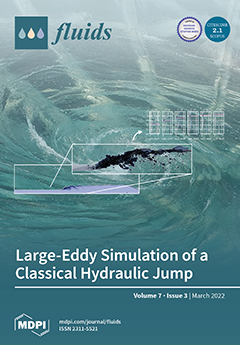In direct numerical simulations (DNS) of homogeneous isotropic turbulence, numerical forcing is needed to achieve statistically stationary velocity fields. The Eulerian two-time correlation tensor of the fluid velocity difference field,
[...] Read more.
In direct numerical simulations (DNS) of homogeneous isotropic turbulence, numerical forcing is needed to achieve statistically stationary velocity fields. The Eulerian two-time correlation tensor of the fluid velocity difference field,
, characterizes the temporal evolution of turbulent eddies whose sizes scale with separation
. In this study, we investigate the effects of two spectral forcing schemes on the temporal decay of the Eulerian two-time correlation of fluid velocity differences
. Accordingly, DNS of homogeneous isotropic turbulence were performed for two grid sizes,
and
, corresponding to the Taylor micro-scale Reynolds numbers
and 210, respectively. Statistical stationarity was achieved by employing deterministic and stochastic spectral forcing schemes. In the stochastic scheme, one needs to specify the time scale,
, of the Uhlenbeck–Ornstein (UO) processes that constitute the forcing. We considered four values of the UO time scale (
, and
) for each
, where
is the large-eddy time scale obtained from the DNS run with deterministic forcing at the same
. It is seen that the correlations
obtained from the deterministic-forcing DNS runs decay more slowly than those from stochastic-forcing DNS runs of all four
values. The slower decay of correlations in deterministic DNS runs is more pronounced at larger separations and for higher
.
Full article





